Potrebujeme váš súhlas na využitie jednotlivých dát, aby sa vám okrem iného mohli ukazovať informácie týkajúce sa vašich záujmov. Súhlas udelíte kliknutím na tlačidlo „OK“.
ASTM E571-12
Standard Practice for Electromagnetic (Eddy-Current) Examination of Nickel and Nickel Alloy Tubular Products
Automaticky preložený názov:
Štandardné praktiky pre elektromagnetické (vírivé) preverenie niklu a zliatiny niklu rúrkové výrobky
NORMA vydaná dňa 1.8.2012
Informácie o norme:
Označenie normy: ASTM E571-12
Poznámka: NEPLATNÁ
Dátum vydania normy: 1.8.2012
Kód tovaru: NS-47242
Počet strán: 5
Približná hmotnosť: 15 g (0.03 libier)
Krajina: Americká technická norma
Kategória: Technické normy ASTM
Kategórie - podobné normy:
Anotácia textu normy ASTM E571-12 :
Keywords:
discontinuities, eddy-current, electrical resistivity, electromagnetic, encircling coil, magnetic saturation, nickel, nickel alloy, pipe (see ), probe, probe coil, tubes, tubular products, welded tubing, ICS Number Code 77.040.20 (Non-destructive testing of metals), 77.150.40 (Nickel and chromium products)
Doplňujúce informácie
| Significance and Use | ||||||||
|
Eddy-current testing is a nondestructive method of locating discontinuities in metallic materials. Signals can be produced by discontinuities originating on either the external or internal surfaces of the tube or by discontinuities totally contained within the wall. Since the density of eddy currents decreases nearly exponentially with increasing distance from the surface nearest the coil, the response to deep-seated defects decreases correspondingly. Phase changes are also associated with changes in depth, allowing the use of phase analysis techniques. The response from natural discontinuities can be significantly different than that from artificial discontinuities, such as drilled holes or notches. For this reason, sufficient work should be done to establish the sensitivity level and setup required to detect natural discontinuities of consequence to the end use of the product. Some indications obtained by this method may not be relevant to product quality; for example, an irrelevant indication may be caused by minute dents or tool chatter marks, which are not detrimental to the end use of the product. Irrelevant indications can mask unacceptable discontinuities. Relevant indications are those which result from discontinuities. Any indication that exceeds the rejection level shall be treated as a relevant indication until it can be demonstrated that it is irrelevant. Generally, eddy-current examination systems are not sensitive to discontinuities adjacent to the ends of the tube (end effect). Discontinuities such as scratches or seams that are continuous and uniform over the full length of the tube may not always be detected with differential encircling coils or probes scanned along the tube length. For material that is magnetic, a strong magnetic field shall be placed in the region of the examining coil. A magnetic field may also be used to improve the signal-to-noise ratio in tubing that exhibits slight residual magnetism. |
||||||||
| 1. Scope | ||||||||
|
1.1 This practice covers the procedures for eddy-current examination of nickel and nickel alloy tubes. These procedures are applicable for tubes with outside diameters up to 2 in. (50.8 mm), incl, and wall thicknesses from 0.035 to 0.120 in. (0.889 to 3.04 mm), incl. These procedures may be used for tubes beyond the size range recommended, by contractual agreement between the purchaser and the producer. 1.2 The procedures described in this practice make use of fixed encircling test coils or probe systems. 1.3 Units—The values stated in inch-pound units are to be regarded as standard. The values given in parentheses are mathematical conversions to SI units that are provided for information only and are not considered standard. Note 1—For convenience, the term “tube” or “tubular product” will hereinafter be used to refer to both pipe and tubing. 1.4 This standard does not purport to address all of the safety concerns, if any, associated with its use. It is the responsibility of the user of this standard to establish appropriate safety and health practices and determine the applicability of regulatory limitations prior to use. |
||||||||
| 2. Referenced Documents | ||||||||
|
Podobné normy:
Historická
1.4.2014
Historická
1.6.2013
Historická
1.1.2010
Historická
1.4.2012
Historická
1.12.2013
Historická
1.1.2010
Odporúčame:
Aktualizácia technických noriem
Chcete mať istotu, že používate len platné technické normy?
Ponúkame Vám riešenie, ktoré Vám zaistí mesačný prehľad o aktuálnosti noriem, ktoré používate.
Chcete vedieť viac informácií ? Pozrite sa na túto stránku.


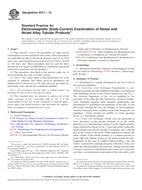
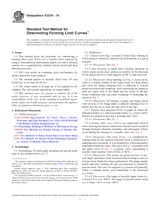 ASTM E2218-14
ASTM E2218-14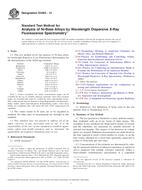 ASTM E2465-13
ASTM E2465-13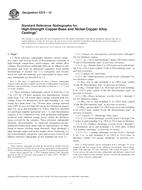 ASTM E272-10
ASTM E272-10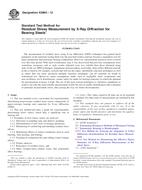 ASTM E2860-12
ASTM E2860-12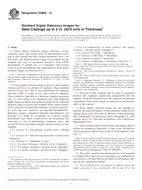 ASTM E2868-13
ASTM E2868-13 ASTM E310-10
ASTM E310-10
 Cookies
Cookies
